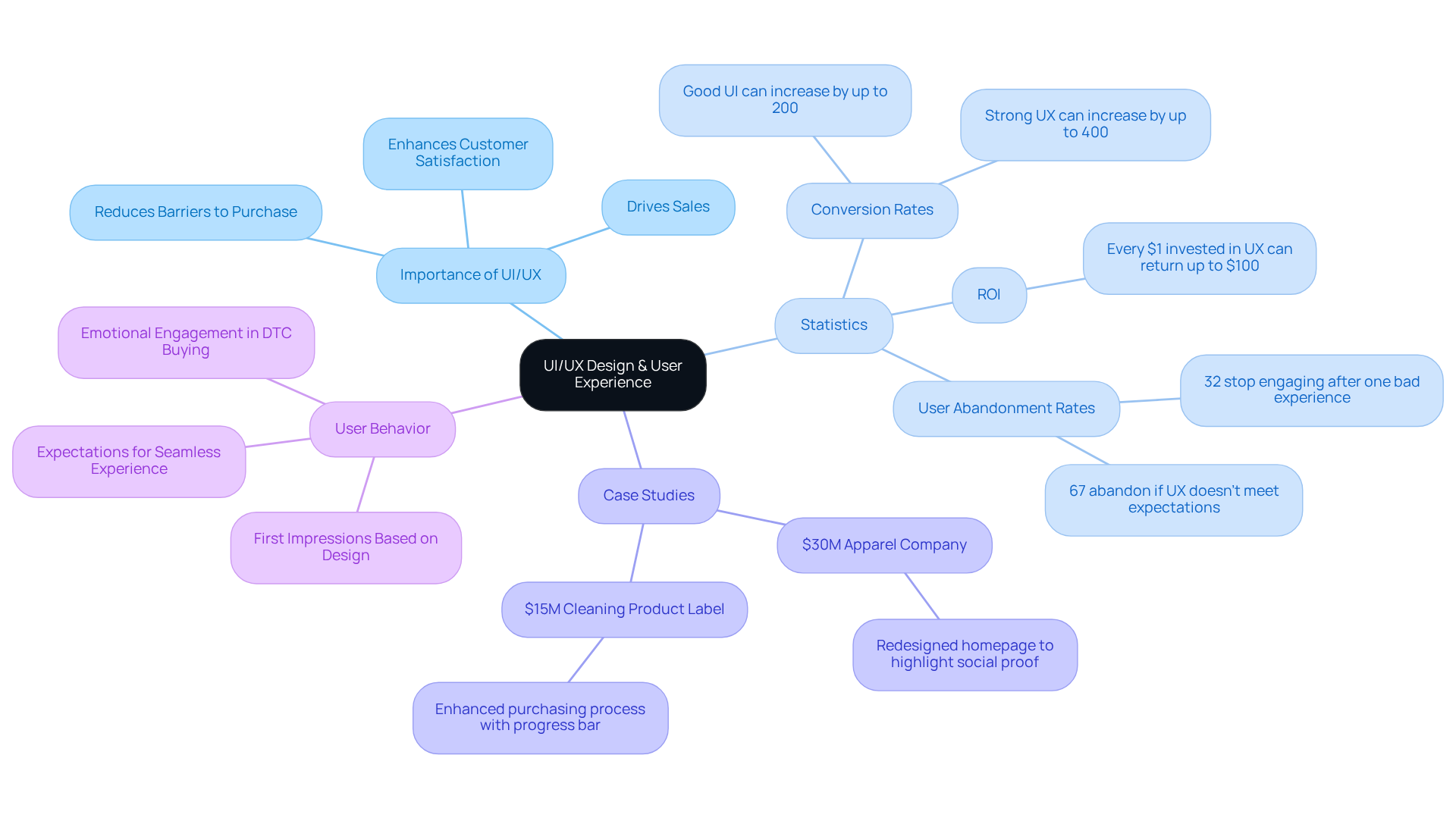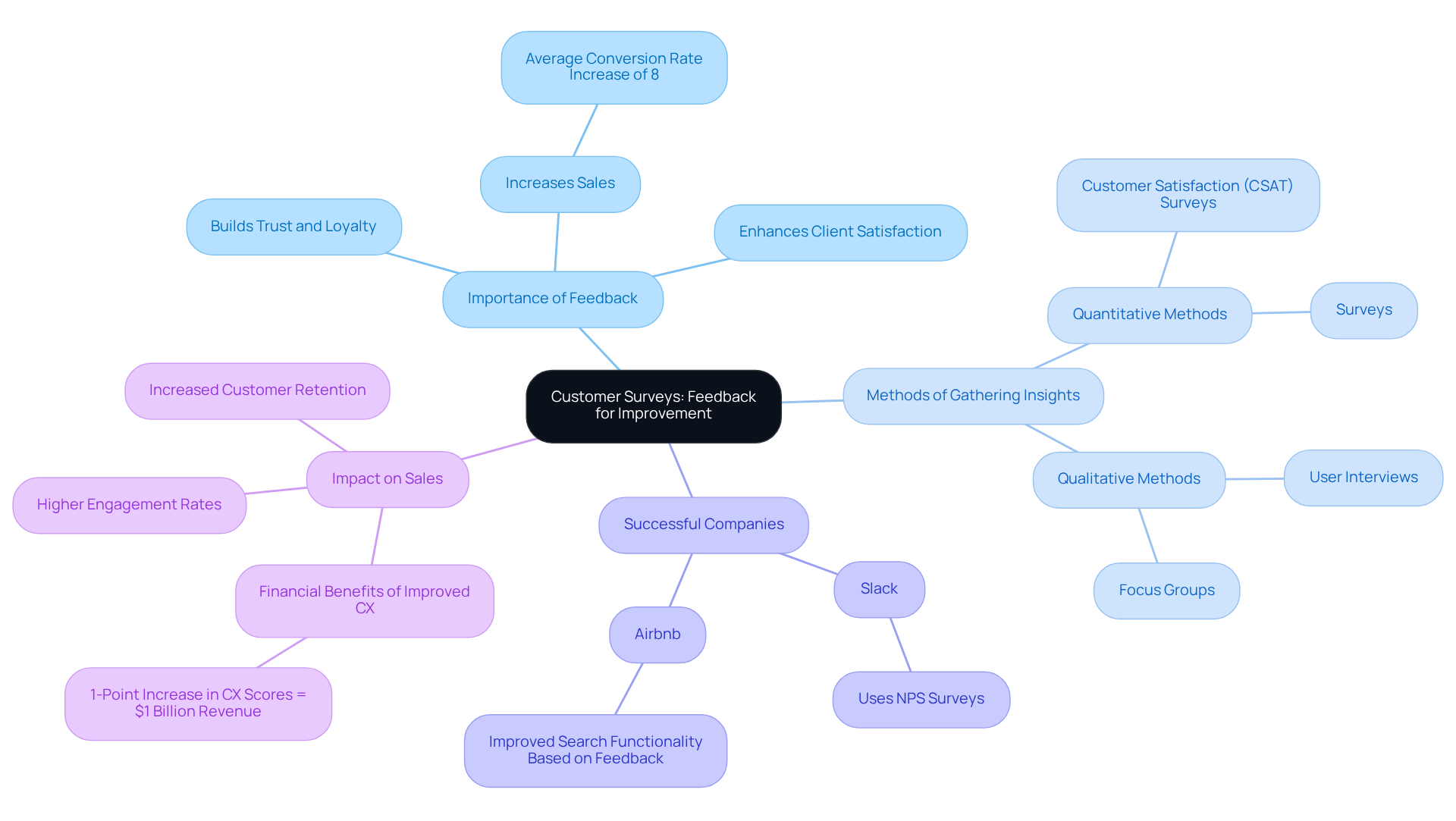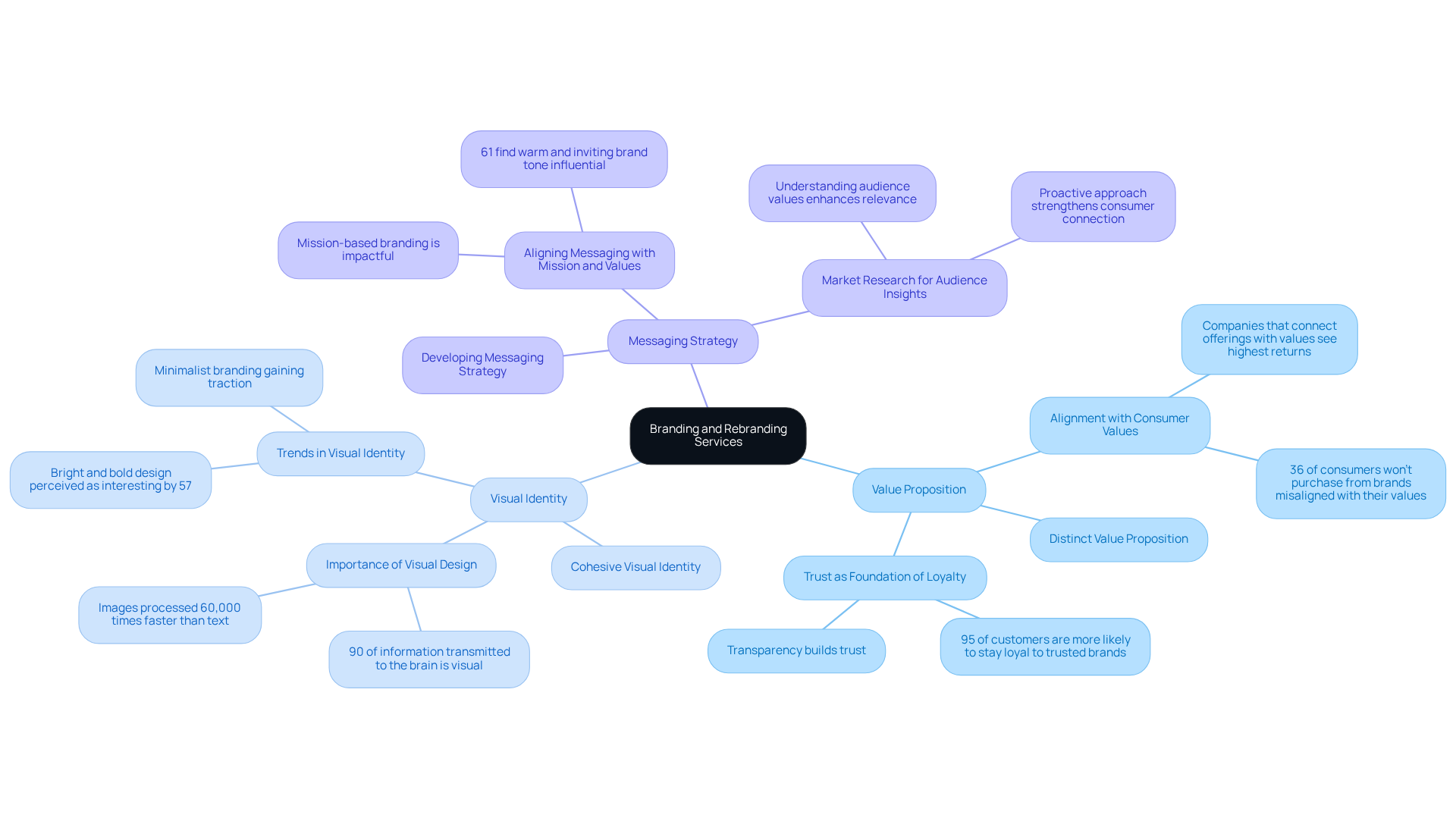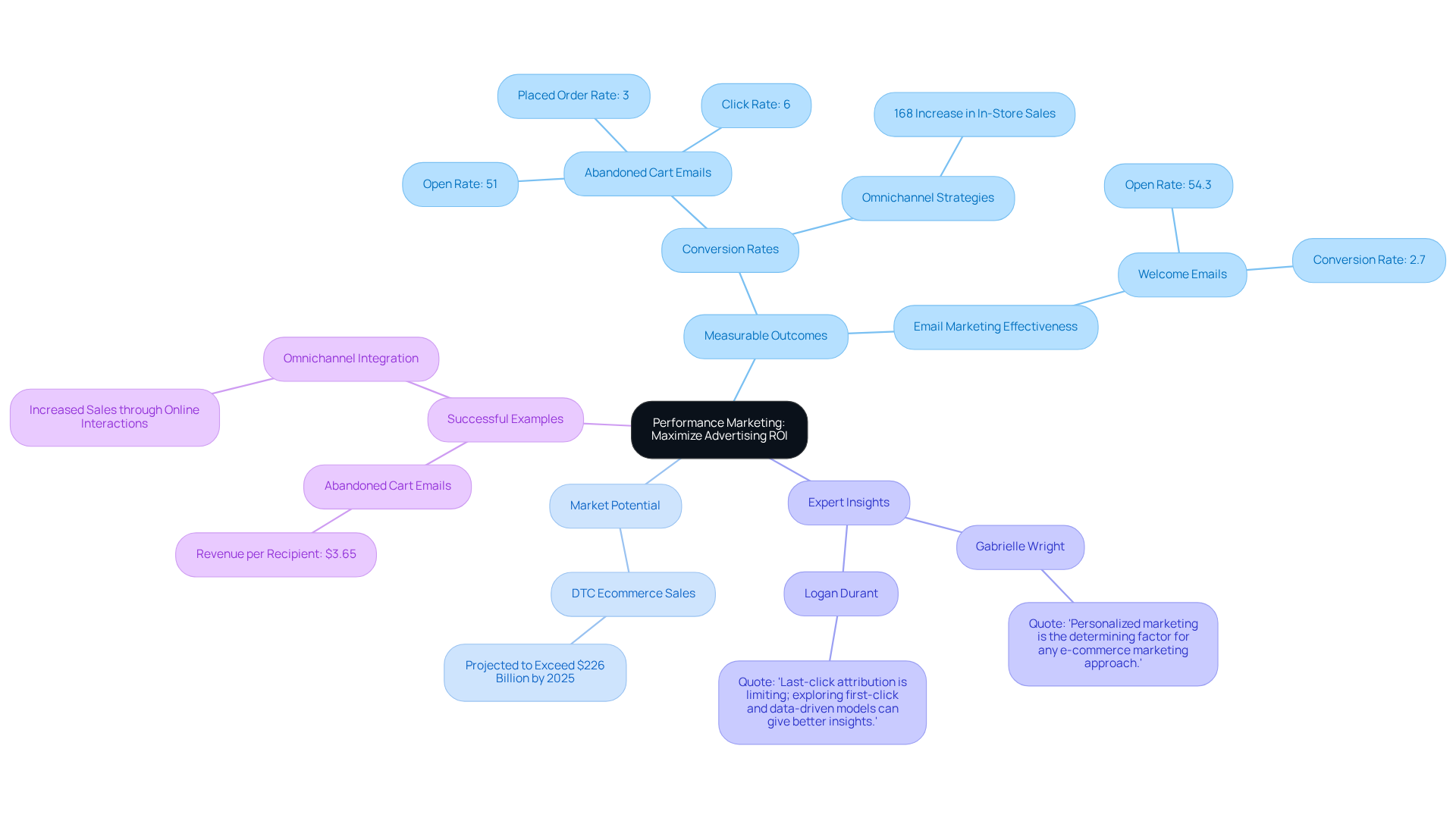
Overview
This article highlights ten essential digital agency services that can dramatically boost the success of direct-to-consumer (DTC) brands. By focusing on strategies like conversion rate optimization, user session recordings, competitor analysis, and performance marketing, it illustrates how these services not only drive engagement but also enhance user experience and ultimately increase profitability.
Supported by compelling industry statistics and case studies, the effectiveness of these strategies is clear. For instance, brands that implement conversion rate optimization often see significant improvements in their sales figures. User session recordings provide invaluable insights into customer behavior, allowing brands to tailor their offerings more effectively. Competitor analysis ensures that DTC brands stay ahead of the curve, while performance marketing maximizes their reach and impact.
In conclusion, leveraging these digital agency services is not just beneficial; it’s essential for DTC brands aiming for sustained growth and profitability. By adopting these strategies, brands can position themselves for success in an increasingly competitive marketplace.
Introduction
In today’s fast-paced digital landscape, direct-to-consumer (DTC) brands are grappling with the challenge of capturing and retaining customer attention. With fierce competition and escalating acquisition costs, the stakes have never been higher. To not just survive but thrive, these brands must harness innovative digital agency services that enhance visibility, optimize user experiences, and drive conversions.
This article explores ten essential services that can significantly elevate a DTC brand's success. Are these strategies the key to achieving sustainable growth in an increasingly crowded market? Let’s delve deeper into how these approaches can transform your brand's trajectory.
Parah Group: Comprehensive Conversion Rate Optimization Services
Parah Group stands at the forefront of Conversion Rate Optimization (CRO) services, expertly tailored for direct-to-consumer (DTC) brands. Their comprehensive suite of offerings encompasses:
- User session recordings
- Competitor analysis
- Persuasive copywriting
- UI/UX design
- Customer surveys
- Continuous A/B testing
This integrated strategy ensures that every facet of a client's marketing and website is meticulously optimized, enhancing effectiveness and driving profitability without necessitating increased advertising expenditures.
Looking ahead to 2025, companies leveraging CRO services can expect average ROI enhancements soaring up to 223%. This statistic underscores the potency of these strategies in catalyzing growth. Industry leaders emphasize that a robust CRO strategy not only boosts conversion rates but also enhances customer satisfaction and loyalty. Proven successes from agencies reveal that tailored CRO strategies can lead to substantial increases in revenue per visitor and average order values, making them indispensable for DTC companies aiming to thrive in a competitive landscape.

User Session Recordings: Analyze Customer Interactions
User session recordings provide invaluable insights into real-time interactions on websites, enabling companies to observe user behavior in detail. By analyzing these recordings meticulously, businesses can identify specific areas where users face challenges, recognize elements that capture their attention, and understand their navigation patterns. This data is essential for making informed design and content modifications, leading to significant improvements in user experience and engagement rates.
For instance, companies leveraging session analysis often see an average increase in success rates, with User Conversion achieving a remarkable 26% boost for an ecommerce client utilizing session replay analysis. As UX researcher David Mannheim emphasizes, understanding customer interactions is vital for optimizing the user journey, noting that "it's often the nuances that reveal what is—or isn't—happening with that customer."
Implementing session recordings allows DTC companies to craft a more intuitive shopping experience, resulting in higher engagement and conversion rates. Moreover, considering that approximately 25% of app installations lead to just one session, effective user engagement strategies become crucial. Tools like Hotjar and Popcorn Replay facilitate this analysis, helping companies enhance their customer experience.
Parah Group's comprehensive CRO approaches, including A/B testing and growth consulting, further underscore the importance of data-driven insights. They focus on maximizing profitability through rigorous testing and optimization tailored to the unique needs of DTC companies.

Competitor Analysis: Gain Insights into Market Positioning
Conducting thorough competitor analysis is crucial for DTC companies that want to benchmark their performance against industry leaders. By examining rivals' strengths, weaknesses, and strategies, companies can extract valuable insights that inform their marketing and product development efforts. This strategic approach not only aids in effective market positioning but also helps identify unique selling propositions that resonate with consumers.
Brands that regularly engage in competitor analysis have reported an impressive average market share increase of 15%. This statistic underscores the tangible benefits of this practice. Marketing experts emphasize that comparing with rivals is essential for understanding market dynamics and refining product strategies.
Effective competitor benchmarking in the DTC sector involves leveraging data analytics to monitor rivals' performance metrics and utilizing client feedback to identify market gaps. For instance, Parah Group's case studies illustrate how a $30M apparel company boosted its conversion rate by 35%, while a $15M cleaning product label increased its average order value by 80% through targeted conversion rate optimization strategies.
By harnessing customer insights and adopting these methodologies, DTC companies can sharpen their competitive edge and drive sustainable growth. The time to act is now—embrace competitor analysis to elevate your brand's performance.

Conversion Copywriting: Craft Persuasive Marketing Messages
Conversion copywriting is crucial for crafting compelling content that drives action. By thoroughly understanding the target audience's needs and desires, companies can create messages that not only inform but also persuade. This process involves leveraging emotional triggers, formulating clear calls to action, and addressing potential objections—key elements that enhance success rates and maximize return on investment.
Effective copywriting can lead to significant improvements in average conversion rates. Many companies have reported increases of up to 36% in ROI from well-crafted messages. As David Ogilvy famously stated, advertisements should be so engaging that they inspire purchases, highlighting the importance of connecting with consumers on an emotional level.
By focusing on these critical elements, businesses can develop marketing messages that resonate with their audience and ultimately drive sales. To ensure maximum effectiveness, companies should consistently test their copy to identify what resonates best with their audience.

UI/UX Design: Enhance User Experience for Higher Conversions
UI/UX design is crucial for crafting a seamless and engaging user experience that drives sales. By prioritizing intuitive navigation, responsive design, and visually appealing layouts, brands can guide users effortlessly through their purchasing journey. Effective UI/UX design not only enhances customer satisfaction but also significantly boosts sales rates by reducing barriers to purchase.
Research shows that good UI can elevate conversion rates by up to 200%, while strong UX can increase them by as much as 400%. Moreover, every dollar invested in UX can yield a return of up to $100, highlighting the financial impact of quality design. It's essential to recognize that 94% of users form their first impression based on design, and 88% will not return to a site with poor UX. Additionally, 32% of users will stop interacting with a company after just one negative experience, underscoring the importance of delivering a positive user experience.
Aligning design with user needs is vital; 67% of users abandon a website if the UX doesn’t meet their expectations. By creating memorable experiences that resonate emotionally, brands can solidify their success in the competitive DTC landscape. Parah Group's comprehensive CRO methods ensure that UI/UX design is not merely a visual choice but a fundamental aspect of enhancing profitability and driving revenue growth for DTC companies through their digital agency service.
For instance, in our collaboration with a $30M apparel company, we redesigned their homepage to highlight social proof and reviews, leading to a significant improvement in conversion rates. Similarly, our strategies for a $15M cleaning product label involved enhancing the purchasing process with a progress bar, resulting in a notable increase in average order values. These case studies exemplify how effective UI/UX design can directly contribute to enhanced profitability.

Customer Surveys: Gather Feedback for Continuous Improvement
Customer surveys are essential for gathering consumer feedback, providing invaluable insights into experiences, preferences, and pain points. By systematically collecting and analyzing this feedback, DTC companies can pinpoint areas needing improvement and adjust their strategies accordingly. This ongoing feedback loop is vital for staying relevant and enhancing client satisfaction, which can lead to significant increases in sales. In fact, companies that prioritize client feedback often see an average conversion rate increase of 8%, underscoring the importance of listening to consumer opinions.
Successful organizations like Slack and Airbnb have effectively harnessed client feedback to refine their offerings. Their experiences illustrate that a commitment to understanding client needs can drive strategic changes and foster loyalty. To effectively gather consumer insights, companies should employ a blend of quantitative and qualitative methods, such as targeted surveys and user interviews, ensuring a comprehensive understanding of user sentiments.
By actively engaging with clients and addressing their feedback, companies not only improve their services but also enhance their overall sales potential. This proactive approach not only builds trust but also positions businesses for sustained growth in a competitive landscape.

Ongoing A/B Testing: Optimize Strategies Based on Data
Continuous A/B testing is a game-changer for companies looking to refine their marketing strategies, from website designs to email campaigns. By systematically analyzing the performance of various options, businesses can gain actionable insights that significantly boost user engagement and sales metrics. This iterative approach is essential for adapting to shifting consumer preferences and maximizing marketing effectiveness.
Consider this: 77% of companies currently utilize A/B testing on their websites. Yet, studies reveal that only one out of eight tests produces substantial results, highlighting the critical need for strategic execution. For instance, firms like PayU have achieved a remarkable 5.8% increase in successful transactions by optimizing their checkout processes through A/B testing. Similarly, Zalora improved its checkout rate by 12.3% by enhancing product page visibility.
As Elizabeth Levitan, a Digital Optimization Specialist, emphasizes, the ability to identify and run multiple tests simultaneously is crucial for effective optimization. This data-driven approach not only elevates success rates but also fosters a culture of continuous improvement. For direct-to-consumer (DTC) companies aiming for sustained growth, A/B testing is not just beneficial—it's essential.

Digital Marketing Services: Drive Traffic and Engagement
Digital agency service encompasses a range of strategies designed to boost visibility and attract visitors to websites, particularly for DTC brands facing rising customer acquisition costs (CAC) and intense competition for digital advertising space. These strategies include:
- Search engine optimization (SEO)
- Social media marketing
- Content marketing
- Email campaigns
By effectively leveraging these channels, DTC companies can engage their target audience, build brand awareness, and ultimately drive conversions.
In 2025, companies that harnessed SEO and social media marketing reported average traffic increases of up to 30%. This statistic underscores the critical role these strategies play in enhancing online presence. SEO not only improves search rankings but also fosters organic traffic growth, while social media platforms serve as vital channels for storytelling and community engagement.
To drive traffic and engagement, DTC companies must prioritize the creation of high-quality, relevant content that resonates with their audience. This strategy not only builds trust but also encourages sharing, thereby amplifying reach. Moreover, integrating email marketing campaigns can nurture leads and sustain customer relationships, driving repeat purchases.
Experts assert that successful digital marketing hinges on relationship-building rather than merely pushing products. As Doug Warner aptly noted, "In the realm of Internet Customer Service, it’s crucial to remember your rival is just one mouse click away." This highlights the necessity for companies to differentiate themselves through authentic interaction.
Ultimately, a robust digital marketing strategy that utilizes a digital agency service combining SEO, social media, and content marketing can significantly elevate a DTC company's visibility and foster sustainable growth in an increasingly competitive landscape. Additionally, focusing on key performance indicators such as customer lifetime value (CLV) and average order value (AOV) is essential for optimizing profitability and ensuring long-term success.

Branding and Rebranding Services: Establish a Strong Brand Identity
Branding and rebranding services are crucial for DTC companies aiming to forge a compelling identity that resonates with their target audience. This process involves:
- Crafting a distinct value proposition
- Establishing a cohesive visual identity
- Developing a messaging strategy that aligns with the organization's mission and values
A robust identity not only attracts clients but also cultivates loyalty and trust—key components for long-term success.
Research underscores the importance of a clearly defined identity, revealing that 95% of consumers are more likely to remain loyal to brands they trust. Trust serves as the foundation of loyalty, emphasizing its vital role in customer retention. Furthermore, companies that effectively connect their offerings with consumer values tend to see the highest returns, illustrating the necessity of adapting to evolving customer preferences.
As trends shift towards sustainability—an aspect projected to be non-negotiable by 2025—and personalization, businesses that communicate their values and mission effectively are better positioned to engage their audience and build lasting relationships. To ensure your identity resonates, conducting market research to grasp your audience's values and preferences is essential. This proactive approach not only enhances your brand's relevance but also strengthens its connection with consumers.

Performance Marketing: Maximize Advertising ROI
Performance marketing represents a strategic approach that directly links advertising spend to measurable outcomes, such as conversions and sales. By focusing on data-driven strategies and refining campaigns based on performance metrics, DTC companies can significantly enhance their return on investment. This method not only increases profitability but also allows for more effective resource allocation, paving the way for sustainable growth.
Recent studies indicate that DTC ecommerce sales for established brands and digitally native firms are projected to exceed $226 billion by 2025, underscoring the vast market potential. Industry experts emphasize the necessity of data-driven advertising, with Gabrielle Wright stating, "Personalized marketing, as we understand from our experiences as brand enthusiasts and as marketers, is the determining factor for any e-commerce marketing approach in a competitive setting."
Successful examples abound, particularly among brands that have adeptly integrated omnichannel strategies, resulting in a remarkable 168% increase in in-store sales linked to online interactions. Furthermore, consider the effectiveness of abandoned cart emails, which boast an average open rate of 51% and a conversion rate of 3%. These illustrate practical applications of data-driven strategies that can further optimize advertising ROI.
By prioritizing these data-centric methodologies, DTC brands are well-equipped to navigate the complexities of the modern market.

Conclusion
In the competitive landscape of direct-to-consumer (DTC) brands, leveraging digital agency services is not just beneficial; it’s essential for achieving sustainable growth and success. Effective strategies hinge on critical components such as:
- Conversion Rate Optimization (CRO)
- User session recordings
- Competitor analysis
- Conversion copywriting
- UI/UX design
- Performance marketing
Each of these services plays a vital role in enhancing customer engagement, refining marketing messages, and ultimately driving conversions. This establishes a robust foundation for DTC brands to thrive.
Key insights reveal that utilizing CRO can lead to significant ROI improvements, with statistics indicating potential increases of up to 223% by 2025. Understanding customer interactions through user session recordings and gathering feedback via customer surveys provides invaluable data for refining user experiences. Furthermore, competitor analysis and effective digital marketing strategies empower brands to position themselves strategically within the market. Strong branding and performance marketing ensure that every advertising dollar spent translates into measurable results.
To truly capitalize on these insights, DTC brands must adopt a proactive approach in implementing these digital agency services. By focusing on continuous improvement and data-driven decision-making, brands can enhance their visibility and engagement while fostering lasting relationships with their customers. Embracing these strategies is not merely a choice; it is a necessity for brands looking to navigate the complexities of the digital landscape and secure their position as industry leaders.
Frequently Asked Questions
What services does Parah Group offer for Conversion Rate Optimization (CRO)?
Parah Group offers a comprehensive suite of CRO services tailored for direct-to-consumer (DTC) brands, including user session recordings, competitor analysis, persuasive copywriting, UI/UX design, customer surveys, and continuous A/B testing.
How does Parah Group's CRO strategy benefit clients?
Their integrated strategy optimizes every facet of a client's marketing and website, enhancing effectiveness and driving profitability without requiring increased advertising expenditures.
What expected return on investment (ROI) can companies anticipate by 2025 from CRO services?
Companies leveraging CRO services can expect average ROI enhancements soaring up to 223% by 2025.
How does user session recording help businesses?
User session recordings provide insights into real-time user interactions on websites, allowing businesses to identify challenges users face, recognize attention-capturing elements, and understand navigation patterns, which leads to informed design and content modifications.
What impact can session analysis have on conversion rates?
Companies utilizing session replay analysis have seen a significant increase in success rates, with one ecommerce client achieving a 26% boost in user conversion.
Why is competitor analysis important for DTC companies?
Competitor analysis allows DTC companies to benchmark their performance against industry leaders, extract valuable insights, refine product strategies, and identify unique selling propositions that resonate with consumers.
What benefits have brands reported from conducting competitor analysis?
Brands that regularly engage in competitor analysis have reported an average market share increase of 15%, highlighting the tangible benefits of this practice.
Can you provide examples of success from Parah Group's CRO strategies?
Yes, case studies from Parah Group demonstrate that a $30M apparel company boosted its conversion rate by 35%, while a $15M cleaning product label increased its average order value by 80% through targeted CRO strategies.
FAQs











